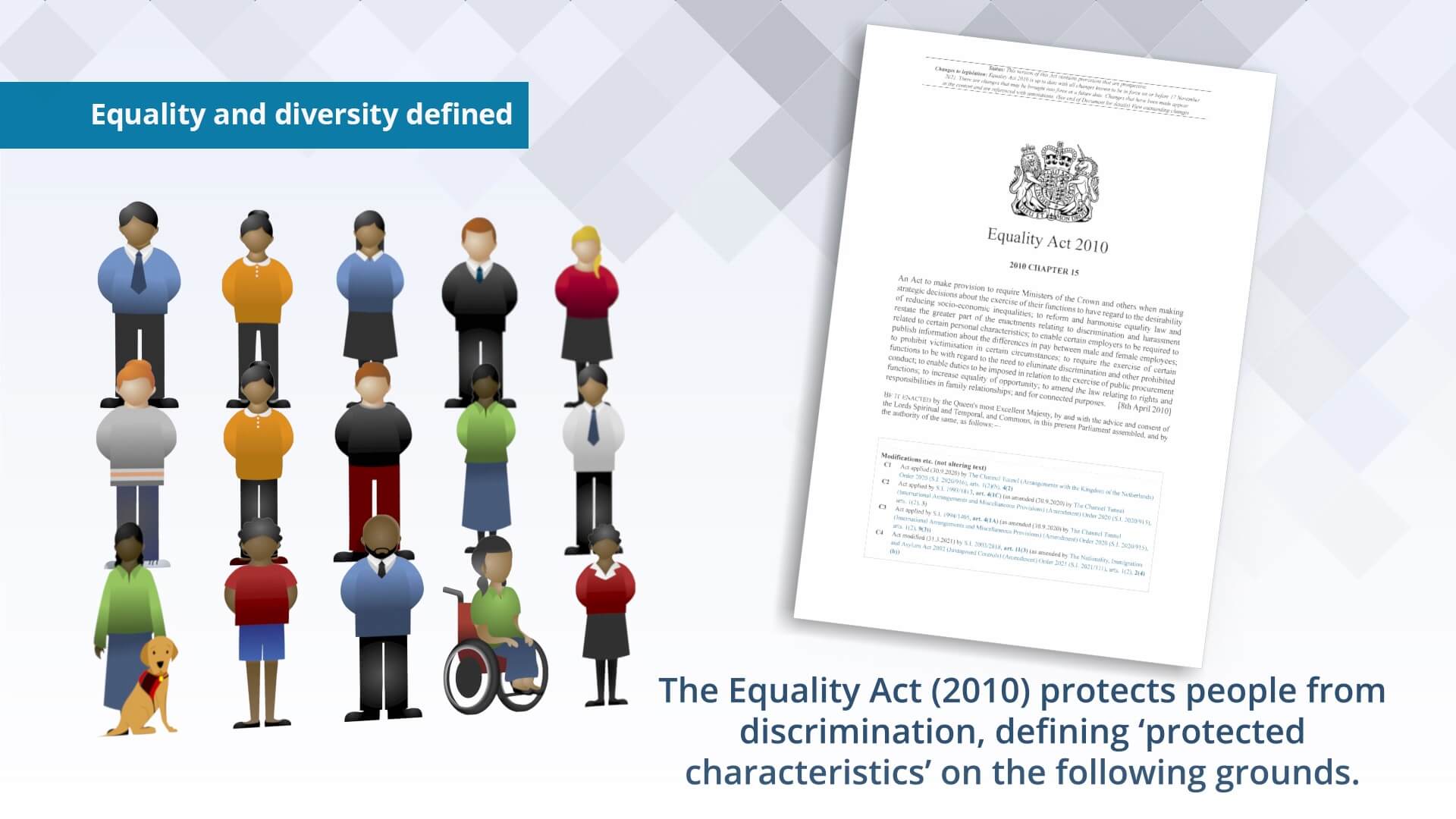Equality, Diversity & Inclusion in the workplace - it’s everybody’s business

Safeguarding Director Sam Preston talks about why an inclusive workplace culture is more than just ticking boxes.
Recent events have shown, just having a policy and procedures regarding equality, diversity and inclusion (ED&I) is not enough. As we have seen in much publicised cases such as those involving Yorkshire County Cricket Club or government office and Conservative MP Nusrat Ghani, despite policy and procedures being in place, everyday practice and behaviours have led to allegations of discrimination related to protected characteristics. Such examples highlight the need for both strategic robustness, the need to embed a culture of equality at the very heart of our practice and a listening culture to ensure everyone's ED&I priorities are reflected in all we do.
Background: ED&I in practice
Many years ago I worked as a strategy manager for school improvement within a local authority. At this time the authority, which had some of the highest rates of poverty and poorest academic achievement rates in England, had a designated team of people whose role is was to promote equality, diversity and inclusion. They operated within the Access and Inclusion division which was completely separate, both budgetary and managed, from the School Improvement division. The team worked really hard developing policy and developing schemes to promote all aspects of the equality, diversity and inclusion remit. However once developed, their challenge was to try to integrate the policy and schemes into the practice of all across the rest of the authority.
To set the scene, at this time attainment rates were of major concern and under close HM Government scrutiny. This resulted in all of the improvement work and monitoring being completely focused on the work of the School Improvement division. Whilst everyone appreciated the importance of the work of the Access and Inclusion division, there was never any serious consideration as to how their work could positively contribute to overall school improvement. In fact, having this dedicated team gave an almost complicit permission that the promotion of equality, diversity and inclusion was the responsibility of others.
It's very similar to how safeguarding used to be viewed within educational settings, where it was mainly deemed to be the responsibility and remit of Head Teachers and Designated Safeguarding Leads. Thankfully, we've come a long way in changing such attitudes and the message that 'safeguarding is everyone's responsibility' is well embedded in practice.
We invest in and ensure all staff not only receive safeguarding training, but that they are able to apply the principles of such training in everyday practice. My argument is that we have to approach equality, diversity and inclusion in the same way.
This is why, in addition to legislation and theory, we have focussed our 'Equality, Diversity & Inclusion in the workplace' course on developing best practice for leaders, staff and volunteers.

How to create a positive Equality, Diversity and Inclusion (ED&I) culture in the workplace
An inclusive workplace culture can be achieved by a variety of actions such as:
- Recognising the importance of all employees work and the contribution they make;
- Identifying key people to champion equality, diversity and inclusion in the workplace such as directors, governors, trustees or appointing a designated person to lead this area;
- Issuing equality and diversity monitoring forms to job applicants employees and volunteers and acting on the information gathered;
- Enabling accurate feedback through anonymous and voluntary staff surveys;
- Analysing all collected data to identify if there are any significant patterns indicating disparity between groups, particularly groups where protected characteristics apply;
- Creating an action plan to promote inclusion and address any known areas where action is needed;
- Having an effective reporting system in place where complaints are taken seriously and appropriately acted upon in a timely way;
- Ensuring there are opportunities where staff can talk openly about workplace culture;
- Promoting events and activities that encourage inclusion e.g. antibullying, mental health and wellbeing awareness;
- Addressing any issues which may exclude staff;
- Regularly review the Equality, Diversity and Inclusion policy to ensure it is fit for purpose, particularly with regard to feedback from collected data or following any complaints / investigative procedures;
- Ensuring there are systems in place where staff can access help, support and advice;
- Ensuring all exit interviews include questions which explore if exclusion was a factor in their decision to leave. This useful feedback will enable proactive change.
Carrying out the above actions is, in effect, a process of regularly auditing practice to check how effective the arrangements your organisation has in place. Regularly undertaking and taking part in such actions is a core part of your organisation's ongoing development.
If, just as we've done with safeguarding, we truly want to embed equality diversity and inclusion at the heart of everything we do, we must move beyond the tick box exercise of having policy and procedures in place and prioritise creating an 'it's everybody's business' culture.
SSS Learning Safeguarding Director
28 January 2022